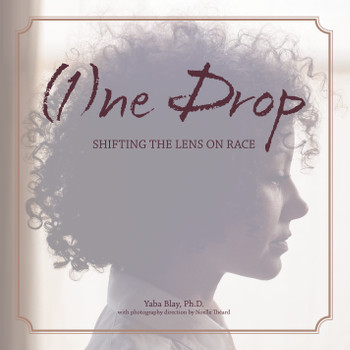Kaneesha Parsard on (1)ne Drop and the Multiplicity of BlacknessPosted in Articles, Arts, Asian Diaspora, Identity Development/Psychology, Interviews, United States on 2014-05-27 14:47Z by Steven |
Kaneesha Parsard on (1)ne Drop and the Multiplicity of Blackness
Climbing Vines: A Collection of Short Stories
2014-05-01
When you think of blackness what do you see? Dr. Yaba Blay’s multiplatform project (1)ne Drop and book (1)ne Drop: Shifting the Lens on Race complicate the answers to that question. In the book, visually stunning portraits and candid personal testimonies, presented along with historical conceptions of race, challenge the rigid notion of what blackness is.
Kaneesha Parsard (Penn ’11) was one of (1)ne Drop’s incredibly forthcoming contributors whose profile shed light on her mixed African and East Indian heritage and the privileges and challenges that are tied to her physical appearance – but her interest in race extends beyond her participation in this project. Currently a doctoral student in the combined program in American Studies and African American Studies (and doing a qualification in Women’s, Gender, and Sexuality Studies) at Yale University, her research examines the literary and artistic representations of the late 19th century and early 20th century colonial British West Indies and the ways in which the descendants of enslaved Africans and indentured Indians shared spaces and frustrated the colonial management of bodies, dwellings, and reproduction. And by the time you read this, she will have already submitted the prospectus for her dissertation, “Improper Dwelling: The Yard, The House, Sexuality and Colonial Modernity, 1838-1962.”
Read Climbing Vines’ conversation with Kaneesha to learn about her experience with (1)ne Drop, her thoughts on black beauty and self-image and to find out her plans for the future.
How did you get involved with (1)ne Drop?
I did the interview in the summer of 2011 … after I graduated from Penn. Yaba Blay, [Co-Director of] Africana Studies at Drexel – who got her PhD from Temple [University] in African American Studies – got in contact with me, I believe through Salamishah Tillet [Associate Professor of English at the University of Pennsylvania], who is one of my very close mentors. I think Salamishah recommended me for the book. She came to my house and that’s where we did the interview. And then we followed it up a couple weeks later with a photo shoot in downtown Brooklyn. It was really beautiful to see the ways that Yaba and her partner in the project, Noelle Théard, who is a photographer, sought to visualize the themes I was talking about in my interview with different settings and colors…
Read the entire interview here.


